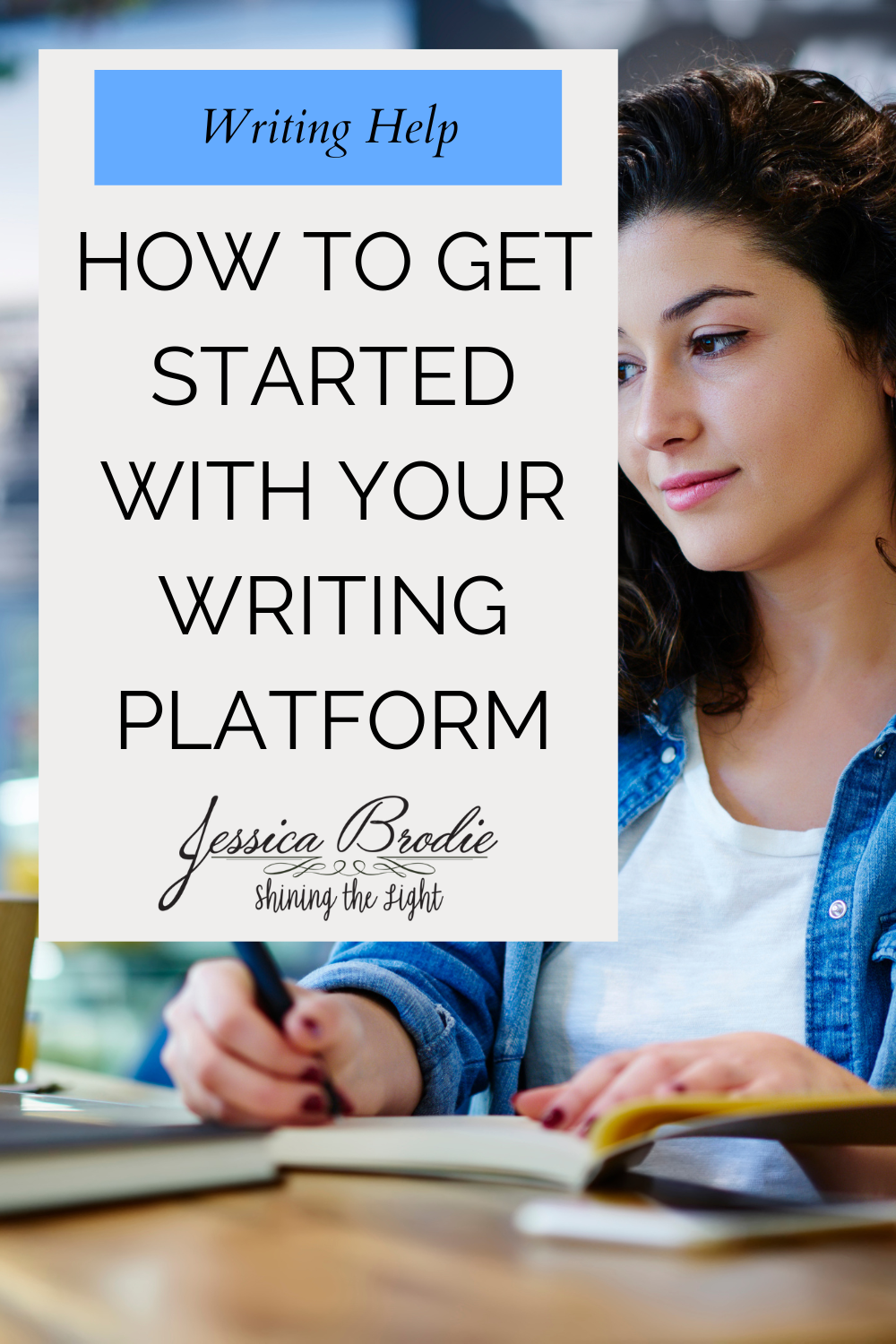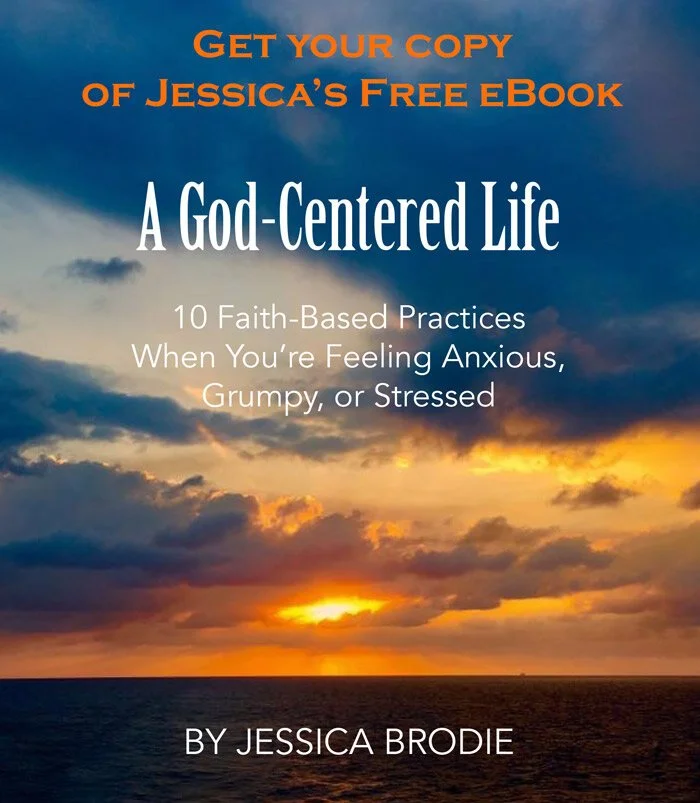How to Get Started with Your Writing Platform
By Jessica Brodie
It doesn’t matter whether you think of yourself as a “real” writer or author, or whether you’re just dabbling in writing and unsure where this will go. If you’re reading this, you’ve probably decided you’re ready to establish a more professional online presence. This is a good thing!
What follows here is a beginner’s guide to launching your writing platform, also called your “online presence.”
Why should I have a writing online presence?
First, agents and publishers expect you to have an online presence. Readers expect it, too. But also, having an online presence helps you:
Organize your writing life
Look more professional
Have a “platform,” a necessity for all writers today
Start to establish your business (brand)
Gain followers (who can be your future readers)
Why do I need to be a “brand”?
I find it’s helpful to think of what you do in writing as a “brand” or a “business.” Even if your goal is not to make money and even if you plan to be fully non-businesslike and very casual, it helps to understand you now have two identities: you and “writer you.” You’re essentially establishing a brand. Even if you are just starting out, you’re still a brand.
I prefer to think of this more as my “why” in writing. Why am I doing this? Who am I doing this for? Who would want to read this? And how can they figure out that connecting with me will help them in some way?
Many writers are shy about promoting themselves (I understand this completely). But having a brand helps with this because you realize you are no longer promoting YOU but rather your brand—the things you write, the topics you care about, etc.
Do I need a website?
All writers need a website, but this does not need to be extensive in any way. You can use a free site, such as a Wordpress blog.
The site can be static, where it doesn’t change and simply serves as a place for your picture, bio, contact info, etc. (think of it as your web-based business card).
But for writers, it’s a good idea to have a blog as part of your website. You do not need to blog daily or even weekly. It doesn’t even need to be long! But posting at a minimum of once a month, say on the 5th of each month, keeps your site fresh and lets visitors know you are still active and it’s not an “old” or unused page accidentally never taken down.
A blog also drives more traffic to your website, helping you get more views.
If you want to learn more about starting a blog, click here to read my article, How to Start a Blog.
Which social media should I be on as a writer?
The short answer: everything. Or whatever you like. Writers need a basic website, as well as a basic presence on the major social media platforms.
Most writers use the following social media: Facebook, Twitter (now known as X), and Instagram. I recommend you have a presence on each.
Many also use LinkedIn, Pinterest, TikTok, and YouTube. There are others beyond these, but these are the biggest as of this writing.
It’s helpful to have an account for each social media you select that gives some basic information about you, has at least a few posts by you so people know you are a “real” account and not spam (showcasing a blog, a work-in-progress, or something on your website), and steers people back to your website, email, or other place where they can learn more about you.
How do I handle personal vs. writing use of my social media?
If you use social media for personal enjoyment already, such as to connect with relatives, colleagues, or old friends from high school, that’s great—but keep your personal use and your business use separate. Even if you rarely use it for personal interaction, still, separate is best.
On Facebook, the ideal is to have a personal “profile” where you interact with family and friends, and a business “page” where your writing activities are housed.
This doesn’t mean you can’t share an occasional family picture on your writing page with your writing followers. “Business” doesn’t mean you’re not a real person! But your personal page is where you’ll share cute kitten videos, talk about politics, or showcase your latest cookie recipe. Your business page is separate.
It’s fine to share things back and forth to the different audiences, too. For instance, if you post a blog or share an excerpt from your story on your writing page, it’s great to also share it on your personal page. Same thing with Twitter (X) and Instagram. If you use Twitter (X) or Instagram for fun, politics, etc., then do all that on your personal account. Your business account should be for anything writing-related, whether by you, about you, by other writers, about other writers, or about writing or your writing topic in general.
What should my social media accounts be named?
Select a universal account name for each social media account. If your name is a common one, such as Jane Smith, you’ll likely find the account name “janesmith” has already been taken by someone, but you can attempt to name it something more complicated, such as janesmithwrites, or thejanesmith, or janesmithwritinglife.
Don’t name your account after your book or a single project. Otherwise, it will be hard to transition when you write and publish a second book or project. You want your accounts named after you. I know several authors who went through a lot of work to launch social media tied to a book, even naming the website and Facebook page after the book. But three years later when they published their next book, it was confusing.
Try to use the same account name for each one to make it easy for people to find you. It’s much easier to say, “Find me on social media @janesmithwritinglife” than to say, “Well, my Facebook page is thejanesmith, but my X account is janesmithwriter, and my Instagram is janesmith1111. Or is it janesmith123? I get confused, sorry. Let me check.” Keep it simple.
What should my social media profile picture be?
Your social media accounts should all use the same picture of you to help people easily recognize you. Your profile picture should be a picture of you and be in focus. Ideally, you’ll be looking directly at the camera and smiling, showing that you are accessible.
If you are writing under a pen name and don’t want to reveal your identity, a photo of a person in sunglasses/a hat, backlit/silhouette, or something of that nature will suffice. I don’t typically recommend avatars, logos, or flowers/other imagery because most people want to connect with actual people, but sometimes, a good image can be perfect.
What do I say for my social media description?
Each social media account should have a similar description of you in the profile/bio section. Be sure to have a description—don’t just leave it blank. Otherwise people might assume you are a fake/spam account and choose not to follow you.
What do I do once my online presence is established?
For social media, first, follow some people from your new account. Think of it as making friends or connections. Also think of it as finding content sources that you can share, too.
Ideally, you will post every day or several times a week. But life gets busy, and new habits take time.
Set a reasonable goal you know you can achieve while you’re getting started. For instance, start with once a week at the same time. Post something new every Tuesday at 10 a.m., or every Thursday at 9 p.m.
Or select three days a week, e.g. every Monday, Wednesday, and Friday morning at 6 a.m.
You’ll go online, post something new of your own, whether this is an inspiring quote from a historical figure you admire, a photo, or a recently blog or writing excerpt.
You can use a scheduler if you like, but if you do, be sure to go back and engage when people comment.
On Twitter, I follow the rule of “for every one thing you post, share posts from five others.” This is where the people you follow come in handy. Find something related to writing or your writing topic that someone else has posted and retweet theirs to your own following. This shares their good content and gives you something worthwhile to share, too.
How do I set up my social media accounts?
You can do every bit of this on your own for free. Here are some basic lessons:
Facebook: https://www.facebook.com/business/help/473994396650734?id=939256796236247
Twitter (X): https://help.twitter.com/en/using-twitter/create-twitter-account
Instagram: https://help.instagram.com/155940534568753
Wordpress Blog: https://wordpress.com/support/five-step-blog-setup/
What if I need help?
If you need help, there are many companies you can also hire to do this work for you. Don’t despair. But you’ll likely find the work easy and fun, enabling you to make new friends and connect in a genuine way with people you might never otherwise have the chance to meet. It really is a small world!
WANT TO HELP SPONSOR JESSICA BRODIE’S WRITING MINISTRY BY BECOMING A PATRON? CLICK HERE.
THANKS TO MY SPONSORS: MATT BRODIE, EMILY DODD, KATHLEEN PATELLA, BILLY ROBINSON, AND LANNY TURNER.
SHARE TODAY’S BLOG ON SOCIAL MEDIA: CLICK HERE OR THE SOCIAL LINKS BELOW.


